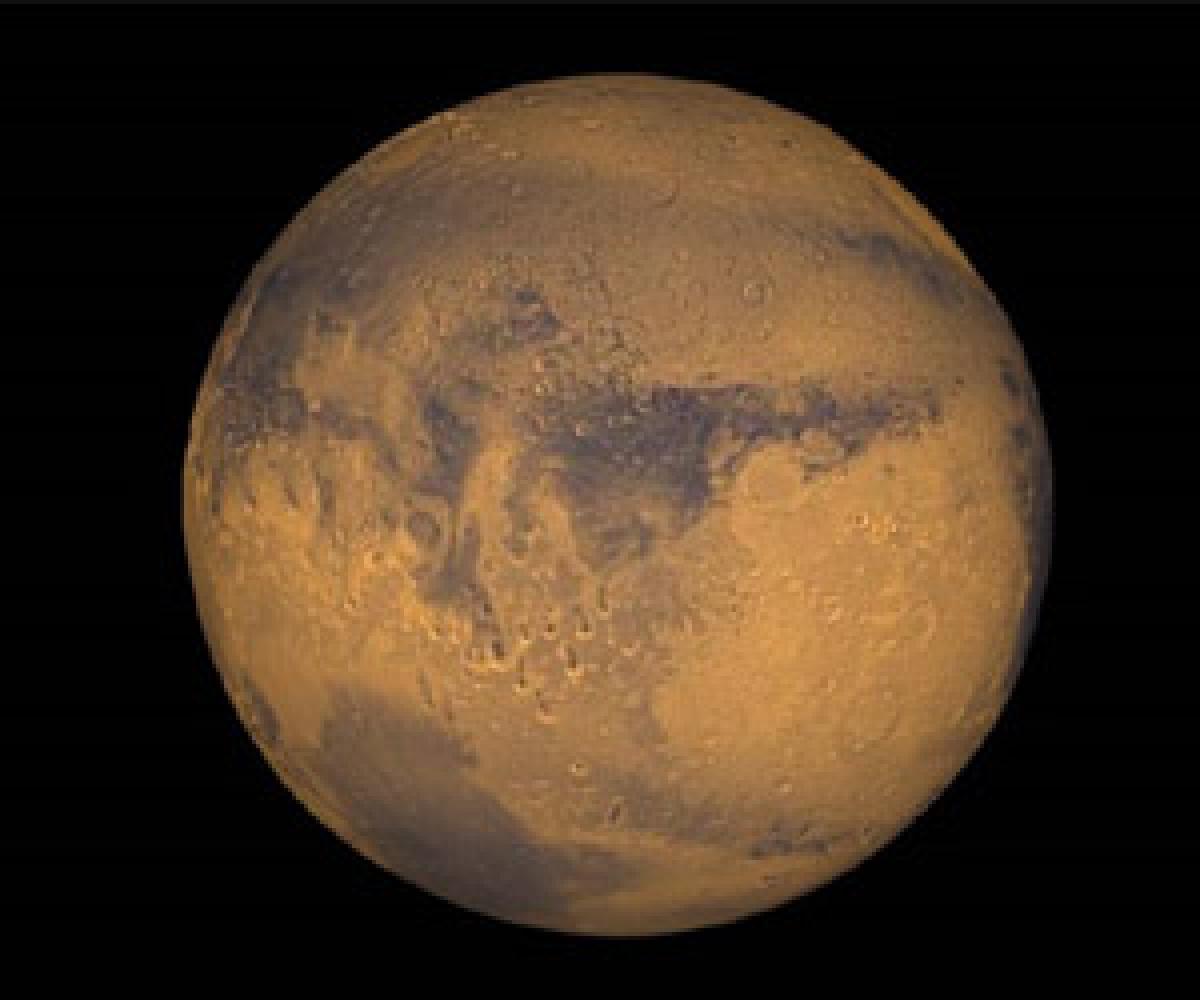Live
- GMR Airports Unveils AI-Powered Digital Twin Platform to Transform Airport Operations
- India poised to become leading maritime player: PM Modi
- Top Causes of Kidney Stones and How to Recognize Silent Symptoms
- India’s renewable energy capacity logs 14.2 pc growth at 213.7 GW
- Winter Session of Odisha Assembly adjourned sine die
- Biden calls Trump's tariff approach 'major mistake'
- After Drama Over Eknath Shinde’s Chief Minister Race, Maharashtra Cabinet Formation Faces New Tensions
- Egyptian FM, Blinken discuss recent developments in Syria
- Iran's supreme leader says Syria's developments result of US-Israeli 'plot'
- Elon Musk to Purchase $100 Million Luxury Mansion Next to Donald Trump's Mar-a-Lago, Report Reveals
Just In

Why wait for a million-dollar ticket to Mars when you can have an inter-planetary experience a la Oscar nominated blockbuster \"The Martian\" right here in India?
Kolkata: Why wait for a million-dollar ticket to Mars when you can have an inter-planetary experience a la Oscar nominated blockbuster "The Martian" right here in India?
One simply needs to head over to the western Indian state of Gujarat to glimpse the remarkable rocky landscape similar to the Red planet.
A replica or "terrestrial analogue" of the Martian surface has been discovered in the state, thanks to Indian scientists from the Space Applications Center (SAC-ISRO) in Ahmedabad, Indian Institute of Technology-Kharagpur and the National Geophysical Research Institute (NGRI) in Hyderabad.
The team identified and documented the presence of a rare mineral jarosite through spectroscopic studies in Matanumadh area (86 km northwest of Bhuj) in Kachch district of Gujarat, a finding which links it to the Red planet. This work is part of a programme initiated by SAC-ISRO under its Mars mission.
"The landscape of Matanumadh with its unusual mineral assemblage, including jarosite, in a basalt terrain, mimics the geological environment of many of the identified jarosite localities on Mars," Saibal Gupta, professor in Department of Geology and Geophysics at IIT-Kharagpur, told IANS.
Presence of the rare mineral was reported from various parts of the surface of the Red planet by NASA's Mars exploration rover Opportunity in 2004. Since then, other rovers have detected jarosite at several localities on the planet's surface.
The fact that jarosite is found in limited natural terrestrial environments means "extreme and unusual" conditions are required for its formation and stabilisation.
"The Martian surface must, at some time, have experienced these conditions. Thus, the positive identification of jarosite, in addition to the previously reported minerals natroalunite and minamiite, is a major argument in favour of the Matanumadh Formation representing a Martian analog locality," contended Souvik Mitra, of IIT-Kharagpur.
In fact, as a clone, the Indian site more closely resembles the Martian surface than known Western Australian jarosite localites, note the researchers in the study published in the Journal of Geophysical Research: Planets in March.
The significance of the discovery is multi-fold and could have implications in the way we explore the Martian surface.
NASA is working to send humans to Mars in the 2030s, but there are many milestones to accomplish to ensure that astronauts come back to the Earth safely, the space agency says on its website.
"The two essential conditions for jarosite formation are near-surface acidic water and oxidizing conditions. Understanding how jarosite formed in the Matanumadh Formation may shed light on the final stages of aqueous (water-based) activity in parts of the Martian surface," said Mitra. Last year, NASA scientists found evidence of flowing water on Mars.
Mitra envisages if the local tourism authorities can educate the locals about the site and its link to Mars, then it could also benefit regional tourism.
Most importantly, in addition to sending up sophisticated robots and probes on Mars to study it, investigations could be carried out right at the Matanumadh Formation at a reduced cost, to understand what transpired on Mars a few billion years ago, according to Gupta.
"This is no substitute to human exploration of the Martian surface, but that could be quite some time in the future. Till then, these analog localities provide a starting point for knowing what to expect."
"In fact, this work is a demonstration of what collaboration between scientists from different organisations within India can do, and SAC-ISRO is to be commended for this endeavour," Gupta added.

© 2024 Hyderabad Media House Limited/The Hans India. All rights reserved. Powered by hocalwire.com







